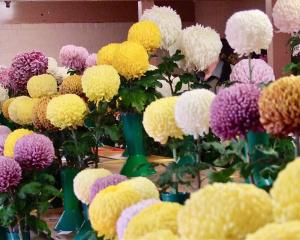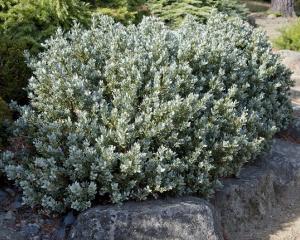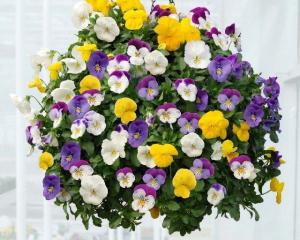Before the Otago Rose Society's annual show, Gillian Vine visits an Outram garden where roses are just one of the attractions.
There have always been roses at Attendale, Daphne and John McFarlane's Outram garden.
Some which were there when they bought the property more than 30 years ago are still growing strongly.
As well as the handful of roses alongside the front path, there was a large area in potatoes and - behind the house - long grass.
The McFarlanes still grow vegetables but these are in a small area at the back and the original spud patch has been replaced with lawn and flowerbeds, including one devoted to roses. The long grass has gone, too, making room for flower and vegetable plots.
In spring, the show by daffodils and other bulbs is followed by camellias, azaleas and rhododendrons, with additional colour from pots of sweet-scented dusty miller (Primula auricula).
Auriculas, especially the double forms, are among Daphne's favourite plants and she grows them in containers.
"We seem to lose them in the garden, so I've potted them up in a gravelly mix," she says.
She repots them annually, which overcomes the problem of "turtle necks" to which they are prone, gives them some fresh mix and they bounce back, producing lots of flowers each spring.
At the same time, what Daphne calls her "fruit salad" Heuchera area is coming into its own. The chief attraction of this perennial is the variety of leaf colours available and the plants grow well in shady areas.
Attendale is 0.2ha but Daphne could easily fill twice that area of garden.
"I often wish we had a farm where I could move the fence out and grow more but we have to go with what we've got," she says.
From about mid-November, the roses begin flowering, balanced by perennials, such as delphiniums.
Daphne's favourite roses are White Romance - "It does very well here" - Playboy, Hamilton Gardens and Hot Chocolate.
John puts Hot Chocolate in his top four, too, but prefers Playgirl - "I bought it because I'd seen it and liked it" - to Playboy.
"I like Peace, too. It's old but it's still good."
His other pick is blood-red Ingrid Bergman which, despite being introduced almost 30 years ago, still wins at rose shows.
The McFarlanes show their roses, a relatively new activity for them, although they have shown other flowers and vegetables for many years at the Outram flower show and Dunedin Horticultural Society shows.
John explains that Otago Rose Society stalwart Gwen Campbell kept urging them to join the society "and in the end we gave in".
"We've been showing roses for three years now," he says.
Daphne says she enjoys showing and admits she is competitive. "But I'm not out and out for that [winning]," she says.
This weekend's show will see the couple putting the best from their garden before the judges, so watch for their names on the prize cards.
See it
Otago Rose Society annual summer show, incorporating Otago Lily Society and Dunedin Vegetable Growers, at Forbury Park Raceway, Victoria Rd, Dunedin. Open to public, 1pm-5pm Saturday, December 3, and 10am-3.30pm Sunday, December 4. Plants for sale, raffles. The $5 entry fee includes morning or afternoon tea.
Not so difficult
Roses are very easy to grow and many will flower for months, Daphne and John McFarlane say. Hybrid tea and floribunda roses are among the best for long displays but if in doubt, look for roses labelled "repeat flowering". Most modern roses are also good as cut flowers.
Choose roses carefully, Daphne says. Look for healthy, well-shaped bushes. If they are in leaf, the foliage should be glossy.
The McFarlanes spray twice in autumn with winter oil, once before pruning and once after. A single application of rose spray after that is usually sufficient.
They try to fertilise every two to three weeks during the flowering season, using Nitrophoska, rose fertiliser and sheep pellets. Each product is applied separately, so rose fertiliser, for example, goes on every couple of months, as do the others.
Ask an expert
Ever wondered if that rose in your back yard which keeps flowering every year has a name?
Well, now's your chance to solve the mystery.
If you bring the rose, on a stem with some of its leaves, to the Otago Rose Society's summer show this weekend at Forbury Park, one of their "experts" will try to identify it for you.
If you'd like to display it for others to enjoy, the ORS can arrange that as well.










